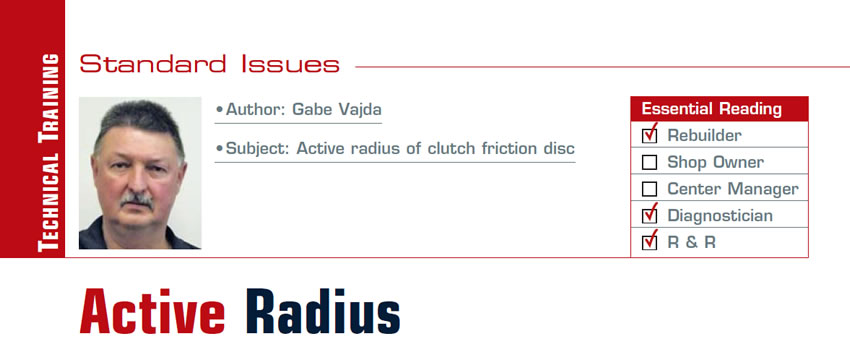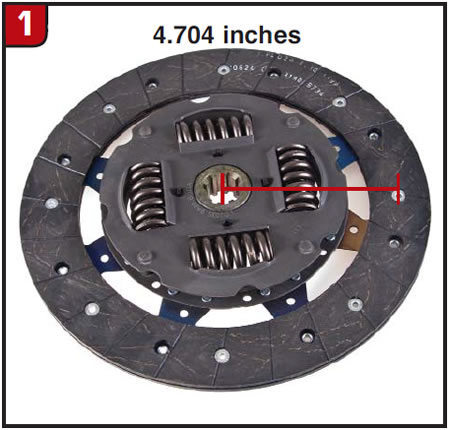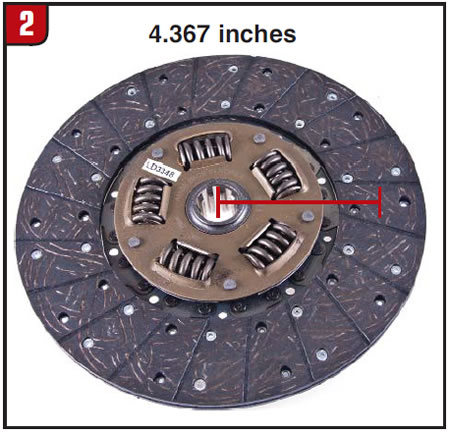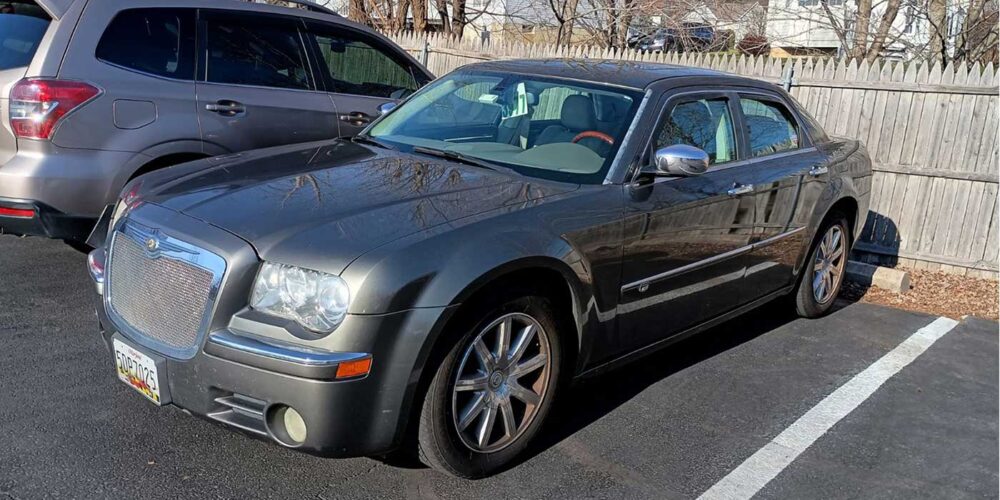
Standard Issues
- Subject: Active radius of clutch friction disc
- Essential Reading: Rebuilder, R&R
- Author: Gabe Vajda
When automotive technicians order parts for a repair job they know they need the right part, and a quality part as well. So it is just a common procedure of any repair job that technicians will inspect the new part to make sure it is both a correct and a quality part without any visual or functional flaws that would lead to a poor repair job and a customer comeback.
Many newer-design clutch friction discs are designed with a thinner band of friction material than the original disc that came in the vehicle. The thinner band of material on the newer design may seem like a bad thing to some technicians as they compare the new parts with the ones that came out of the vehicle. Conventional thinking would be that more is better; more friction material will mean a stronger clutch.
Sometimes less is more
The active radius of a friction disc is defined as the distance from the center of the disc’s splined hub to the center of the friction material. So using a thinner band of friction material on the disc will increase the active radius. You can think of the active radius as a lever. The longer the lever the easier it is to move a given load.
Figures 1 and 2 illustrate how a thinner band of friction material will increase active radius and, therefore, the torque capacity of a clutch. The disc in Figure 1 has a thinner band of friction material than the one in Figure 2. This will increase the active radius and torque capacity of a clutch.



Gabe Vajda, ASE certified technician, is a technical-support engineer for the LuK, FAG and INA product lines of Schaeffler Group USA Inc.













